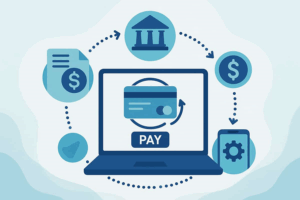
In modern competitive environments, delivery efficiency is no longer a luxury but an inevitable part of running the business. Customers expect fast, accurate, and timely delivery services, and their satisfaction directly influences your brand reputation and profitability by a great margin. A well-organized delivery process not only helps in enhancing customer satisfaction but also contributes toward cost reduction, resource optimization, and improvement in general operational performance. Achieving this requires businesses to employ strategic approaches and tools in making every part of their delivery operations a well-oiled machine.
Map Out Your Delivery Workflow
Smoothening your delivery process begins with understanding and documenting the existing workflow. Distinguish each stage in the chain of order processing-dispatch-delivery, where inefficiencies, bottlenecks, or steps that are redundant could only serve to make things slow. Clearly mapping out your workflow shows you which areas of your process need improvement. With this comes the necessary foundation for making informed decisions on how to refine your process.
Utilize Route Optimization Software
One of the most effective ways to enhance your delivery process is by using route optimization software. These tools analyze various factors such as traffic patterns, locations to be delivered, and constraints regarding time for determining the most efficient routes for your drivers. By reducing travel time and fuel usage, route optimization software not only speeds up delivery but also trims operating costs significantly. The implementation of such technology helps facilitate more deliveries by business firms within a very short time. This can enhance smooth and timely service for customers.
Focus on Real-time Communication
Efficiency in delivery demands clear and timely communication among members of your team. Give drivers and dispatch personnel tools that facilitate real-time updates, including mobile apps or communications platforms. That ensures any issue at hand-be it delays or changes in instructions relating to the delivery-get instantly communicated and dealt with on the spot.
Real-time communication will further facilitate proactivity in solving problems that allow the customer to be in the loop and satisfied with your service.
Invest in Driver Training
Your drivers are the most crucial blocks in the circle of delivery for your goods. Train them on various company protocols, safety, and customer service etiquette. Educate the drivers on how to deal with abrupt incidences. This may range from tough places of delivery to customers’ complaints. Good drivers bring with themselves the much-needed knowledge for effectively conducting their duties in service and interact positively with the customers to ensure a reduced error margin.
Improve the Packaging Process
Smoothen your delivery process down to how goods are packaged. Ensure packaging is done faster, consistently, and safely. Employ the correct packaging size for minimum wastage and to ensure items are well cushioned against potential damage during transport. Standardizing packaging materials and procedures can further reduce costs and enhance efficiency since your team will spend less time customizing each package according to orders. A well-organized packaging system also ensures quick loading of delivery vehicles.
Monitor Performance with Data
Data is your most powerful resource to pinpoint weaknesses in the delivery process and measure the effectiveness of your improvements.
Keep track of delivery times, customer feedback, order accuracy, fuel consumption, among other metrics, to evaluate your current strategies and perform data-driven changes. Ongoing performance monitoring makes sure your delivery operations stay not only efficient but also continuously evolves as your business grows.
Provide a Seamless Return Process
Returns are an inevitable part of any delivery operation, but doing it well differentiates your business. A frictionless return process reinforces customer trust and loyalty. Provide a clear process on how returns may be made easier for customers to do so. The less trouble this step presents, the less friction there is with repeat business; it also makes for easier internal procedures.
Streamlining your delivery process is not a one-time task but an ongoing effort. As customer expectations evolve and technology advances, businesses must stay adaptable and proactive. By optimizing routes, enhancing communication, investing in training, and leveraging data, you can create a delivery system that meets customer demands while improving operational efficiency. With the right strategies in place, your delivery process can become a strong asset that supports long-term success.

















